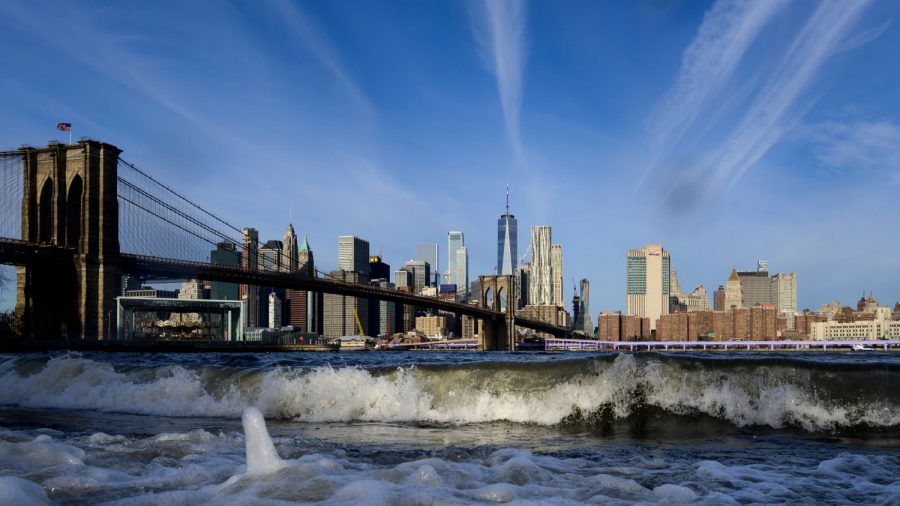Hundreds of the world’s rivers are awash with “dangerous levels of antibiotics,” the largest global study on the subject has found.
The major study, which examined the levels of 14 commonly used antibiotics in 711 sites in 72 countries, found 65 percent of them are contaminated with the drugs.
The research, which was presented at a conference in Helsinki on May 27, revealed 111 of the sites contained levels of antibiotics which exceeded safe levels, with the worst cases more than 300 times over the safe limit, The Guardian reported.
Researchers analyzed samples from rivers in 72 countries and found that antibiotics were present in 65% of them. https://t.co/G5x9vPYioS
— CNN International (@cnni) May 28, 2019
The findings come as the United Nations last month declared antibiotic resistance a global health emergency that could kill 10 million people by 2050.
By 2050, 10 million people could die each year from diseases that have grown resistant to drugs [resulting from an overuse of antibiotics], according to a UN report on drug resistance.https://t.co/TQiD4ZHeLy
— Ardra Manasi (@ArdraManasi) May 8, 2019
Speaking at the Helsinki conference, co-leader of the study and environmental scientist Alistair Boxall told The Guardian: “It’s quite scary and depressing. We could have large parts of the environment that have got antibiotics at levels high enough to affect resistance.”
Experts fear the levels of the drugs in rivers could contribute to the rise in bacteria resistant to antibiotics, which means they can no longer be used in medicines for humans.
Professor William Gaze, a microbial ecologist at the University of Exeter who was not involved in the study, told The Guardian, “A lot of the resistance genes we see in human pathogens originated from environmental bacteria.”
The antibiotics enter rivers and soil via human and animal waste, as well as leaks from drug manufacturing sources and wastewater treatment plants.
The research, which was put together by a global team of scientists led by the University of York, found 35 percent of river sites in Africa and 23 percent in Asia exceeded safe limits for concentrations of antibiotics.
10million extra annual deaths worldwide by 2050, not from 1 disease but from 1 cause: ANTIMICROBIAL RESISTANCE. Not a scare story but official report to UN. More research by scientists to find new antibiotics urgent & management of current ones Including not using in farming pic.twitter.com/076LMU0HGr
— Dr. Michael Porter (@portersDNA) May 8, 2019
In Kenya, one site contained levels of antibiotics more than 100 times the safe level, with some areas so concentrated no fish could survive, researchers said.
Higher levels of antibiotics were found in the rivers of lower-income countries, the study found.
Metronidazole, which is used to treat vaginal infections, was discovered in Bangladesh at more than 300 times the safe level, with residues of the drug discovered near a wastewater treatment plant.
Lack of access to technology to dispose of the drugs in lower-income countries are likely to contribute to the higher levels of contamination, reported The Guardian.
Dangerous levels of antibiotics have contaminated hundreds of rivers worldwide https://t.co/KzXv6tooUp
— Sky News (@SkyNews) May 27, 2019
Meanwhile, 15 percent of river sites tested in North America and 18 percent of river sites in South America contained dangerous levels of the drug. Eight percent of sites in Europe exceeded safe limits, the study found.
Even if relatively low levels of the drug are found in rivers, it could still increase the likelihood of the development and spread of antibiotic resistance, researchers said.
“Even the low concentrations seen in Europe can drive the evolution of resistance and increase the likelihood that resistance genes transfer to human pathogens,” Gaze told The Guardian.
World’s rivers loaded with antibiotics waste: study findshttps://t.co/Sq1Pa3NESQ @AFPgraphics pic.twitter.com/0XgBfxfTO5
— AFP news agency (@AFP) May 28, 2019
“The results are quite eye-opening and worrying, demonstrating the widespread contamination of river systems around the world with antibiotic compounds,” Boxall said.
“Many scientists and policymakers now recognize the role of the natural environment in the antimicrobial resistance problem. Our data show that antibiotic contamination of rivers could be an important contributor,” he added.
“Solving the problem is going to be a mammoth challenge and will need investment in infrastructure for waste and wastewater treatment, tighter regulation, and the cleaning up of already contaminated sites.”
From The Epoch Times


